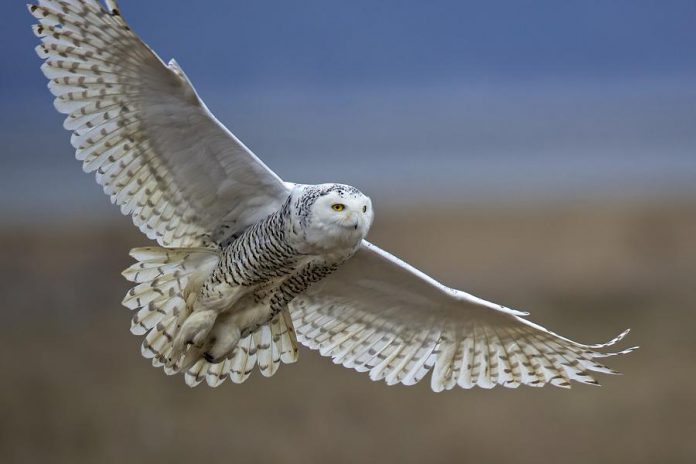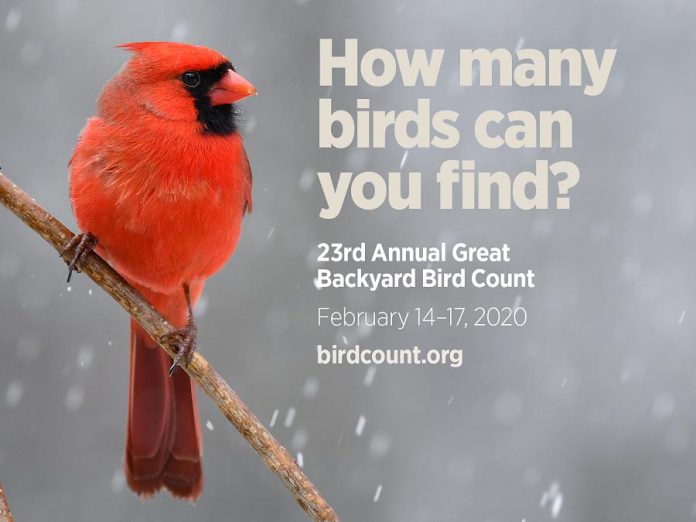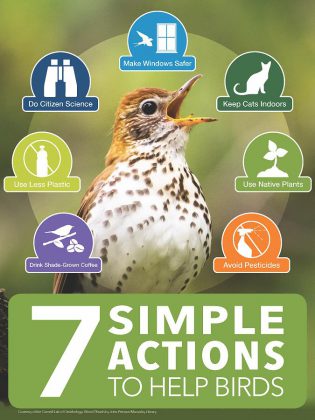
If you’re looking for something special to do with your family on the Family Day long weekend, try your hand at citizen science.
The Great Backyard Bird Count (GBBC) is back for its 23rd year in 2020, beginning on Friday, February 14th (Valentine’s Day) and continuing through Monday, February 17th (Family Day).
During the GBBC, volunteers from around the world will count the birds they see for at least 15 minutes on one or more days of the count, and then enter their checklists at birdcount.org.
This year’s GBBC is especially important, because North America is facing a bird emergency.
In a study published by the journal Science last October, scientists revealed a staggering decline of bird populations in the United States and Canada, with more than one in four birds — three billion birds — gone since 1970.
Last fall, the National Audubon Society published a report called Survival By Degrees: 389 Species on the Brink. The report’s grim findings show that almost two-thirds of North American birds — as many as 389 out of 604 species — are at increasing risk of extinction from global temperature rise, as they are forced to relocate to find favourable habitat.

Birds from around the world are facing similar population declines and challenges.
Counting birds for science is one of seven simple actions people can take to protect birds and the places where they live.
“In order to understand where birds are and how their numbers are changing, we need everybody’s help,” says Marshall Iliff of the Cornell Lab of Ornithology, leader of the eBird program that collects the GBBC data.
“Without this information, scientists will not have enough data to show where birds are declining.”
With more than 10,000 bird species in the world, citizen scientists can play an invaluable role in monitoring birds found in backyards, neighbourhoods, suburban parks, wild areas, and urban areas.
“Birds are important because they’re excellent indicators of the health of our ecosystems,” says Chad Wilsey, interim chief scientist for the National Audubon Society. “Participating in the Great Backyard Bird Count is one of the easiest and best ways to help scientists understand how our changing climate may be affecting the world’s birdlife.”
“All over the world people are paying more attention to our environment and how it’s changing. There’s a lot of bad news out there, but in just 15 minutes you can be part of a global solution to the crises birds and people are facing.”
During last year’s GBBC, bird watchers from more than 100 countries submitted more than 210,000 bird checklists, reporting a record 6,850 species — more than half the known bird species in the world.

Bird count data become more and more valuable over time because they highlight trends over many years, apart from the normal short-term fluctuations in bird populations.
“At times, we can feel like there’s little we can do on environmental issues,” says Steven Price, president of Birds Canada.

“The Great Backyard Bird Count gives all bird enthusiasts a chance to help, as well as a great opportunity to include family and friends of all skill levels in a common conservation effort. Go out, have fun, and take heart that you are helping birds and nature.”
To learn more about how to take part in the Great Backyard Bird Count, a joint project of the Cornell Lab of Ornithology and the National Audubon Society with partner Birds Canada and founding sponsor Wild Birds Unlimited, visit birdcount.org.
In addition to participating in the Great Backyard Bird Count, you can also help birds by making your windows safer, keeping your cats indoors, planting native plants, avoiding pesticides, drinking shade-grown coffee, and using less plastic.


























